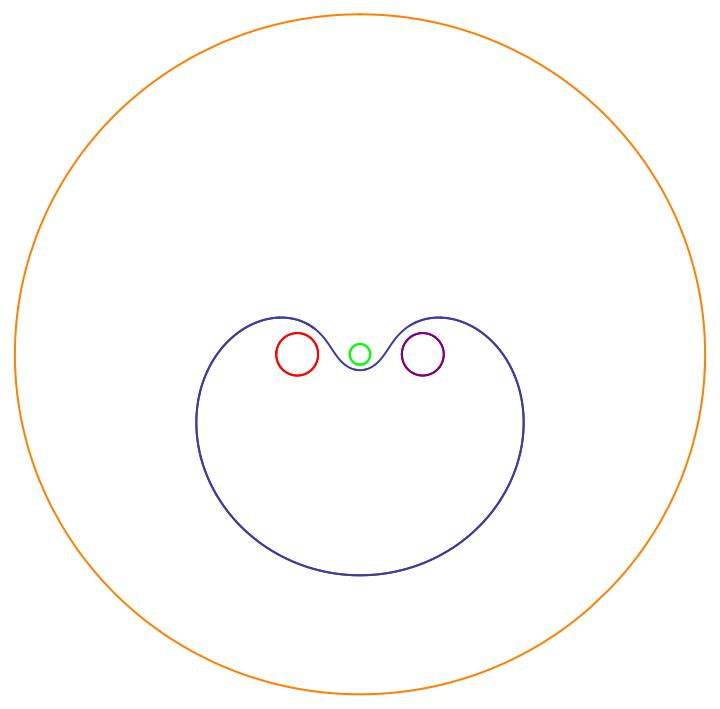Thinking of $\mathbb {CP^1}$ as the sphere $S^2\subset\mathbb R^3$, we can define the notion of a circle on it to be a subset that is got by a hyperplane section of $S^2$ inside $\mathbb R^3$. This notion is known to be invariant under the complex automorphism group $PSL_2(\mathbb C)$ of $\mathbb {CP^1}$.
Suppose $n\ge 3$ is an integer. Then, it is known that the complement of $n$ distinct points $\{z_1,\ldots,z_n\}$ on $\mathbb {CP^1}$ carries a unique complete hyperbolic conformal metric of finite area, call it $g$. It is also known that if $\gamma$ is a simple closed curve on $X = \mathbb {CP^1}-\{z_1,\ldots,z_n\}$ which is homotopically non-trivial, then it is homotopic to a unique simple closed geodesic for $g$. Let us continue to denote this by $\gamma$. Is it then true that $\gamma\subset \mathbb {CP^1}$ is a circle in the sense of the previous paragraph?






